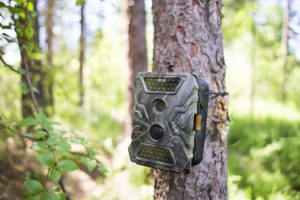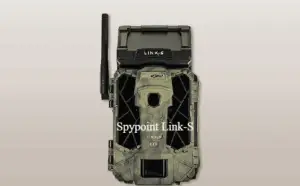
Perhaps the greatest invention for those who enjoy the outdoors is the cellular trail camera. What is the most bothersome issue you have to deal with when you see a gorgeous animal on a trek or trail? encapsulating the spirit of your adventure.
Best Cellular trail cameras have the potential to solve that problem. They let users get amazing and impromptu images of birds and animals in their natural environments.
However, what are cellular trail cameras, and how are they used? We provide a summary of its features, functioning, and the qualities you should look for in a new cellular trail camera in our guide below.
in our guide below.
Based on user ratings, we have also included the top cellular trail cameras for outdoor enthusiasts in 2025. To find out, keep reading our post!
What is a cellular trail camera?
It is a particular kind of camera gear made especially for taking pictures in remote areas. You ask, how does it work? Its communication method requires both inbound and outbound signals, much like a cell phone. It operates in a rather straightforward manner.
The camera’s motion detector will automatically take pictures and send them to a different server whenever any wildlife or animals enter its area of vision. This server may be physically linked to another device, or it may be cloud-based. Getting a strong signal is quite uncommon because trail cameras are usually utilized in isolated or wooded places.
In these cases, it will keep the images on its memory card and operate similarly to a standard digital camera. Trail cameras are also useful for safety since they can alert you to the presence of other animals near your camp or resting spot.
Best Cellular Trail Cameras
1. Spypoint Link-S

Prominent features:
- Still resolution: 12MP
- Video resolution: 1280*720p
- Video length: 90 seconds
- Night vision: Low-Glow LED
- Storage: SD or SDHC card, 32GB
- Cost: USD 129
The Spypoint Link-S is one of the best cellphone trail cameras with the highest ratings. It features an audio recording feature and runs on eight AA batteries. Another interesting aspect is its solar lithium-ion batteries. You might be able to avoid the cost and inconvenience of frequently changing your batteries because they are rechargeable.
2. Reconyx Hyperfire 2 Cellular
Prominent features:
- Still resolution: 1080p or 3MP
- Video resolution: 720p HD
- Range: 150 feet
- Trigger Speed: 0.2 seconds
- Cost: USD 599
One major benefit of this camera is its extremely short trigger speed, as stated in the specifications. The Reconyx Hyperfire 2 Cellular offers outstanding image quality and a broad detection range. Additionally, this camera may be too costly for a novice who is just learning the ropes.
3. Browning Defender Pro Scout Max
Prominent features:
- Still resolution: 20MP
- Video resolution: 1600x900p HD
- Range: 100 feet
- Trigger speed: 0.25 seconds
- Recovery time: 0.35 seconds
- Storage: 512GB memory card
- Cost: USD 89
The Browning Defender Pro Scout Max has an excellent battery life and storage capacity, even with possible signal problems. It’s also quite simple to set up. For up to a year of operation, it needs eight AA batteries. Additionally, you can use the rapid-fire and multi-shot features to capture your subjects.
4. Bushnell CelluCORE 30
Prominent features:
- Still resolution: 30MP
- Video resolution: 1920x1080p
- Video length: 30 seconds
- Storage: SD or SDHC card, 32GB
- Trigger speed: 0.2 seconds
- Recovery rate: 0.6 seconds
- Cost: USD 188
The Bushnell CelluCORE 30 is one of the top cellular trail cameras due to its numerous appealing characteristics, particularly its No Glow infrared night range and one of the best trigger speeds and recovery rates available. The 32GB SD card and six AA batteries need to be bought separately, which is the only drawback.
5. Moultrie Mobile Delta Base
Prominent features:
- Still resolution: 24MP
- Video resolution: 1080p
- Range: 80 feet
- Trigger speed: 0.75 seconds
- Storage: SD or SDHC card, 32GB
- Cost: USD 59
The Bushnell CelluCORE 30 is one of the top cellular trail cameras due to its numerous appealing characteristics, particularly its No Glow infrared night range and one of the best trigger speeds and recovery rates available. The 32GB SD card and six AA batteries need to be bought separately, which is the only drawback.
6. Stealthcam DS4K
Prominent features
- Still resolution: two lenses of 16MP
- Video resolution: 4K at 15 FPS, 2560×1440 at 30 FPS
- Range: 100 feet
- Trigger speed: 0.2 seconds
- Storage: SD card, 128GB
- Cost: USD 206
The specifications make clear that this trail camera offers high-quality images and outstanding resolution. You can choose to snap one to nine pictures in a burst, with the time and date of capture stamped on each clip. All you need to do is pair it with the Stealthcam Solar Battery Pack!
7. Muddy Manifest 2.0
Prominent features
- Still resolution: 16MP
- Range: 80 feet
- Trigger speed: 0.8 seconds
- Storage: SD card, 32GB
- Cost: USD 82
Muddy Manifest 2.0 provides fair value for the money, provided you’re willing to forgo the video feature and the somewhat slower trigger speed. As amateurs, we would use this camera to improve our camping experience.
8. Spypoint Flex
Prominent features:
- Photo resolution: 36MP
- Video resolution: 1080p
- Range: 100 feet
- Trigger speed: 0.3 seconds
- Storage: microSD card
- Cost: USD 86
The Spypoint Flex camera is not only inexpensive, but it also has great trigger speed, detection range, and picture and video resolution. In order to maintain the connection, the GPS-enabled trail camera automatically looks for the best provider nearby. The main drawback is that in order to connect to a card reader, an adapter is required.
9. Covert 2021 Blackhawk LTE
Prominent features
- Still resolution: 20MP
- Video duration: 5 seconds with audio
- Flash range: 100 feet
- Trigger speed: 0.65 seconds
- Cost: USD 132
Despite being a limitation, the trigger speed produces excellent images. You can get the Covert Solar Panels here to extend the battery life of your trail camera and never run out of power!
10. Wildgame Terra Cell
Prominent features
- Still resolution: 16MP
- Video resolution: 720p HD
- Range: 80 feet
- Trigger speed: 0.7 seconds
- Cost: USD 92
An adjustable tree strap is included with the Wildgame Terra Cell to make your experience more convenient. Do you want to extend its battery life even if it only requires eight AA batteries? You need not worry because it can be powered by a solar panel. Software for image recognition is included in the app. But it doesn’t always get the finest pictures at night.
Benefits of Cellular Trail Cameras
I can very clearly recall my very first gaming camera. SD cards that could be rapidly inserted into a laptop or other device to see photographs instantly were nonexistent. Furthermore, the camera did not transfer pictures straight to your phone.
No, it used 35mm film, which needed to be developed at your neighborhood Wal-Mart or photo shop. How technology and the times have evolved!
Film-based trail cameras are becoming obsolete, and mobile trail cameras are the new standard. With an SD card that you can replace, they can still be used as a conventional trail camera that you can view on your computer.
What’s even better, though? You no longer even need to do that because real-time updates are now transmitted to your mobile device.
Cellular trail cameras are unquestionably very convenient, whether you use them for hunting, monitoring, or simply for fun. These are five advantages that hunters and wildlife enthusiasts can enjoy with cellphone trail cams.
1. View Images Remotely
Without physically being near the camera, cellular trail cameras allow you to watch the photos and videos straight on your phone.
2. Control Camera Settings Remotely
You can view, store, and delete photos and videos; change the date and time; and adjust the camera’s settings without ever being close to the camera by downloading the cellular trail camera app to your phone.
3. Set Real-Time or Scheduled Updates
Additionally, you have the option of receiving your photographs on a predetermined timetable or in real time. In order to accomplish this, you must have a strong signal from the network provider on the property where your cell camera is installed.
For instance, the Defender Wireless cellular camera from Browning Trail Cameras is offered by both AT&T and Verizon.
4. Gather Hunting Intel
I used my cell phone camera to capture some useful deer hunting information this fall. In the middle of the forest, I set up my camera close to a tree stand. In order to alert me if deer were approaching my stand, it was configured to transmit pictures to me in real time. I would rather hunt somewhere else than frighten deer if they were nearby when I was ready to go there.
5. Take Incredible Game Photos
In addition to being convenient, cellular trail cameras provide excellent image and video quality. My Browning Defender Wireless has produced some of my most stunning trail cam photos. such as this one!
My Picks for Best Cellular Trail Cameras
Here are a few different Browning models that I recommend trying, regardless of your level of experience with cellular trail cameras.
Browning Defender Pro Scout Max
Check out the easy-to-use Defender Pro Scout Max for beginners. It’s a fantastic entry-level gaming camera with good features like
- Takes 20MP images.
- Records beautiful video with audio.
- features a standard infrared flash, which means that when the camera is triggered at night, it emits a subtle red glow.
- has a lengthy battery life and runs on eight AA batteries.
Browning Defender Ridgeline Pro
Try the Browning Defender Ridgeline Pro if you’re a bit more experienced with trail cameras. In addition to being easy to use, it contains a few extra features that trail cam fans could find useful. I adore the following features:
Clarity and range are improved in nighttime images and movies with the new RADIANT 4 Infrared Illumination System.
captures sharp 20MP pictures.
It has dual-carrier technology, records 1920 x 1080p FHD movies with sound, and comes pre-installed with both AT&T and Verizon. Selecting the cellular operator that offers the finest coverage on your property is all that is required.
It requires 16 AA batteries to operate.
Both Verizon and AT&T provide top-rated Browning cellular trail cameras that transmit high-definition images and videos via a 4G LTE network across the country.
I’m sure I’m not the only one who appreciates how trail camera technology has advanced over time. And I’m eager to watch how cellular cameras develop technologically in the future!
How to Choose the Best Cellular Trail Camera?
It can take some time and effort to sort through the wide variety of cellphone trail cameras. Which features ought to be your top priorities? Here is a list of the top six.
1. Screen
As previously said, cellphone trail cameras are also capable of being utilized as regular digital cameras. Check the accessible screen in that scenario. In this manner, before you set up the camera, you can also snap a few practice shots of the area. Check the screen’s size and quality again.
2. LED
Before snapping a picture, trail cameras illuminate the subject with infrared LEDs. Typically, two kinds of LEDs are utilized: low glow and no glow. As the name implies, Low Glow emits very little flash, while No Glow emits none at all. Make sure you select the better option.
3. Trigger Time
The amount of time your camera takes to take a photo after detecting any movement is known as the trigger time. Purchasing a camera with a faster trigger speed can enable you to take more accurate pictures of subjects that move quickly.
4. Recovery Time
Recovery time, as the name suggests, is the amount of time it takes the camera to recover from the last picture and prepare to shoot the next one. You can take more photos in less time if your camera has a quicker recovery time. Like trigger time, this is crucial for catching subjects that move quickly.
5. Resolution
By compressing or interpolating the sample images, the camera’s resolution can be changed many times. Therefore, to have a precise sense of the quality provided, don’t forget to verify the actual sensor resolution.
6. Hybrid Mode
Finally, another essential element is hybrid mode. It enables you to simultaneously record and take photographs, which is excellent for seeing how wild animals behave as they move along your path. A hybrid mode might not be crucial for you, though, if your goal is only to record the individuals’ presence.
How to Place a Cellular Trail Camera
Suitable height
Setting your camera high enough to keep your objective in the center is always preferable. For example, the best height for your camera is between three and four feet if you wish to observe wildlife.
Direction
To capture the desired wildlife behavior, you must know which way to point your cellular trail camera. To ensure that it covers the largest field of vision possible, the camera should be angled such that it faces the target area directly.
Angle
The clarity and usefulness of the photos you take with your cellular trail camera are greatly influenced by the angle at which you hold it. It is advised to tilt the camera slightly downward for best results. This position improves the sharpness of the video, helps prevent direct sunlight, and lowers the possibility of false triggers brought on by moving foliage.
Concealment
Effectively hiding your cellular trail camera is crucial. To reduce the likelihood of being discovered by wildlife and would-be burglars, this procedure is crucial. Utilize camouflage techniques to mix the camera with its surroundings while taking into account the area’s natural surroundings.
Additionally, you can utilize tree branches, natural foliage, or camouflage wraps made especially for trail cameras.
Frequently Asked Questions
Do Cellular Trail Cameras Require Wi-Fi?
Cellular trail cameras transmit the photos they take to a server, app, or mobile device via cellular connectivity. Thus, Wi-Fi is not necessary for them. However, choose a camera that provides excellent connectivity over a broader range if you want to capture the images as quickly as possible.
Are Cellular Trail Cameras Expensive?
The most high-end cellular trail cameras can be fairly costly and may need additional equipment. However, you can choose a less expensive one if you’re an amateur attempting to learn more about the field.
How Long Does a Cellular Trail Camera Last?
The typical lifespan of cellular trail cameras is 8–12 months. Their lifespan is influenced by a number of variables, including usage frequency, environmental considerations, and general quality. Higher-quality, more expensive equipment typically survives longer. To address this issue, you can choose a product with a more robust body design.
Do Cellular Trail Cameras Work in the Dark?
Due to their built-in flash mechanism and infrared LED feature, which activates as soon as the camera detects movement, cellular trail cameras typically function in the dark.
Conclusion: Best Cellular Trail Cameras
The article’s conclusion summarizes the key features you should look for in a cellular trail camera: network coverage, battery life, picture and video resolution, screen, trigger speed, recovery time, and hybrid mode. One of the greatest cellular trail cameras available today is most likely this one if it also offers fast transmission and remote device control via the app.
We’ve made sure to include recommendations for novices, recreational campers, and even experts who like photographing wildlife in its natural environment. Compare the features, pricing, configuration, and other specifications of any equipment you buy to those of comparable items on the market to get the best deal.

One thought on “Top 10 Best Cellular Trail Cameras: Buying Guide & Reviews”